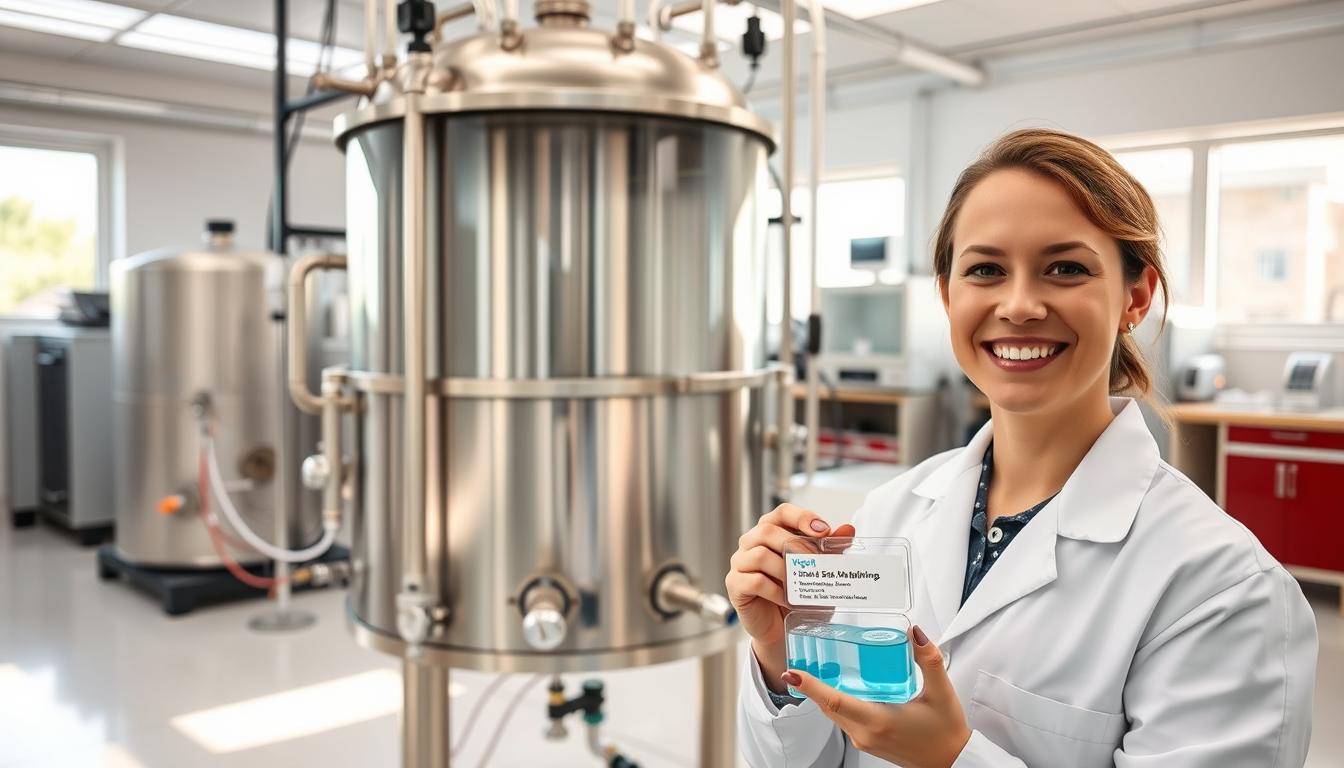Learn about anaerobic decomposition of organic matter by microorganisms. Discover the process and benefits of this natural cycle.
When it comes to the breakdown of organic matter, anaerobic decomposition plays a crucial role. This process, carried out by microorganisms in the absence of oxygen, is essential for nutrient recycling and soil enrichment.
What is Anaerobic Decomposition?
Anaerobic decomposition is the breakdown of organic matter by microorganisms in the absence of oxygen. This process is vital for the cycling of nutrients and the production of methane gas.
Anaerobic Decomposition is the process that occurs during anaerobic digestion. It may be described as the equivalent of “composting without air”. Under normal conditions, such as in a compost bin, aerobic (oxygen breathing) organisms break down biodegradable organic materials into simpler forms of matter, producing carbon dioxide (CO2) in the process. But in anaerobic digestion, the biomass is decomposed with the exclusion of air. In the absence of oxygen, certain microorganisms break down the biomass to produce #biogas which is in general 40% to 60% methane (CH4), a clean-burning renewable combustible gas.
How Does Anaerobic Decomposition Work?
During anaerobic decomposition, microorganisms break down organic matter into simpler compounds, releasing methane gas as a byproduct. Factors such as temperature, pH, and moisture levels can influence the rate of decomposition.
Benefits of Anaerobic Decomposition
Anaerobic decomposition plays a key role in nutrient recycling, methane production, and soil enrichment. By understanding this process, we can harness its benefits for sustainable agriculture and waste management.
Common Misconceptions about Anaerobic Decomposition
There are several myths and misunderstandings surrounding anaerobic decomposition. By dispelling these misconceptions, we can better appreciate the environmental impact of this natural cycle.
How Does Anaerobic Decomposition Work?
During anaerobic decomposition, microorganisms break down organic matter into simpler compounds, releasing methane gas as a byproduct. Factors such as temperature, pH, and moisture levels can influence the rate of decomposition.
From biogas production to waste management, anaerobic decomposition has a wide range of applications. By utilizing this process, we can reduce our environmental footprint and promote sustainable practices.
Is Anaerobic Digestion Truly Beneficial to the Environment?

We all want what is best for the environment. Therefore, we will support any initiative where the variables have been considered and the waste is dealt with in a way which maximizes the recovered value while minimizing the environmental impact.
We believe the combined energy recovery and recycling achievable through anaerobic digestion often make it the best recovery option for certain bio-wastes, such as agricultural manure and slurry and separately-collected food waste. There is also some uncertainty over the relative value of carbon, when used as a source of energy, compared with its long-term value in augmenting soil organic matter.
Recent research has placed a high value of the fibrous output (digestate from the Anaerobic Digestion Process) as a soil organic matter for carbon storage.
While all Anaerobic Digestion facilities should also make use of the waste heat in CHP schemes, and provided that they do. It is generally recognized that anaerobic digestion plants hold a strong record for environmental benefit.
This is for renewable energy production, reduction in agricultural pollution, and raising the carbon content of the land when the fibrous digestate is used as a soil improver/ fertilizer.
In the Temperate Parts of the Globe AD Plants Require Heating
In all but the hottest climates AD plants generally require heating to maintain their chosen operating temperature ranges.

To have to heat large tanks of initially cold feedstock which for all the most common “Wet” biogas process designs, is a heavy burden on the net energy output of any Anaerobic Digestion Process plant. Generally, the choice of a temperature range for anaerobic digestion is strictly dependent on the bio-climatic conditions.
In tropical countries, like Tunisia, where the ambient temperature is higher than 25 degC for a period of more than 8 months in a year, thermophilic anaerobic digestion is readily applied and may be self sustaining without heating.
But, in much cooler Sweden, for example the heating demand is high. So, most plants are “mesophilic” in their operating temperature range, this being cooler than “thermophilic” temperature range digesters. Furthermore, research is currently underway for possible anaerobic digestion under low temperature conditions.
In the USA, anaerobic digestion of sludge under thermophilic conditions has been found problematic in cold states. However, it is well established in Europe where highly efficient well heat-insulated modern Anaerobic Digestion plants are being built, especially for the treatment of the organic fraction of municipal solid waste (Ahring et al., 2002).
What is Co-digestion Mean when Applied to Anaerobic Digestion Processed?
Co-digestion simply means that more than one biomass source is used to feed the biogas plant. Co-digestion can raise the yield of biogas per unit of carbon source in the feedstock, because it usually helps to improve the C:N (Carbon to Nitrogen Ratio) of the feedstock. The secret of a healthy bio-reactor lies in a good C:N ratio. Green wastes/ materials have a high nitrogen ratio, whereas brown/ woody materials have a low C:N ratio.
Co-digestion provides the opportunity for the green and brown(woody) wastes to be stockpiled and mixed in quantities that when fed into the bio-reactor provide a good C:N balance.
In a report from WERF (2014a), co-digestion was analyzed with six substrates: canola oil, restaurant grease, ethanol silage, cheese whey, chicken manure and bio-diesel glycerin. The different feedstock have been tested and compared to the thickened sludge only case study: in all the scenarios presented, biogas production was increased with respect to the anaerobic digestion of sludge only.
Better results are related to glycerin, grease and cheese whey, while chicken manure has a very reduced influence on the overall biogas production (because of the lower specific COD content respect to the other feedstocks). Glycerin and restaurant grease show, in the laboratory phase, an increase in biogas production from 35% (in the first 25 days) to 99% (in the second 25 days).
Our Views on Anaerobic Decomposition
Source separated organics (SSO) [food scraps and yard waste] were a few years ago thought to be best aerobically composted, but recent research has shown anaerobic digestion (decomposition) makes the best sense, especially in urban areas where land for aerobic composting is not available.
Digested food waste is high in nitrogen, so it makes a good companion when combined with say an agricultural dairy farm biogas plant which is also fed with farm manure.
Nevertheless, the fibrous output (digestate) still needs to be aerobically composted after digestion to condition it. But, food scraps and yard waste can be mixed with sewage sludge (“biosolids”), as long as the biosolids are from regulated sewage works such as in Europe, and where contaminant loadings do not preclude the land application of the digestate output.
It would not make sense to mix toxic sewage sludge with yard waste (e.g. as unless the digestate can be placed on the land as fertilizer it’s disposal comes at a high cost. The yard waste from a dairy can be much cleaner, and shouldn’t be blended with more toxic sludges. Doing so also makes it ineligible for accreditation as a suitable fertilizer, as is also the case for compost under organic certification standards, which bars heavy-metal rich sewage sludge as fertilizer.
How to Improve the Gas Yielded from Anaerobic Decomposition of Anaerobic Digestion Feed Materials
As we have indicated earlier in this article, the methane output is actually one of several great benefits from the process. Anaerobic digestion also reduces waste and odor.

The biogas yield is actually dependent on the rate of Cellulose solubilization. Cellulose solubilization is the rate determining step in the anaerobic digestion of organic solid waste.
An increase in the rate of solubilization should lead to an increase in the overall efficiency of the anaerobic digestion process. Processes are being developed to raise the rate of cell-rupture in “hard-to-digest” feedstocks, and the most readily abundant of such sources is sewage sludge.
For sewage sludge there are now several processes which speed up biogas production, and some of these are:
- hydrolysis (heating at high-pressure above the normal boiling point
- use of enzymes to break down cell-walls
- physical methods to create lysis, such as Utrasound, and “exploding” (i.e. repeated rapid pressure changes).
Reactor studies on cellulose solubilization rates are typically conducted in anaerobic, mesophilic environments with approximately neutral pH and may be inoculated from a range of source environments including landfill leachate, manure, sewage sludge, anaerobic digesters, or the rumen.
Are All Anaerobic Digestion Process and Biogas Plants Home to the Same Micro-organisms?
Despite similarities in the operating conditions of reactors inoculated from different source environments, the respective microbial communities may differ in many respects, including their species profile, biofilm architecture, nutritional requirements, particle colonization, and hydrolysis rates. Microbial communities in cellulolytic environments are highly complex with interactions among numerous trophic groups required to carry out the digestion process.
Anaerobic Decomposition – Summary
It is possible to view Anaerobic digestion as the equivalent of “composting without air”.
Anaerobic digestion isn’t simply “greenwash” it does provide substantial green benefits, and the waste heat should be used in CHP systems, in all biogas projects.
Biogas production for co-digestion is greater than for separate digestion of the same materials.





Leave a Reply